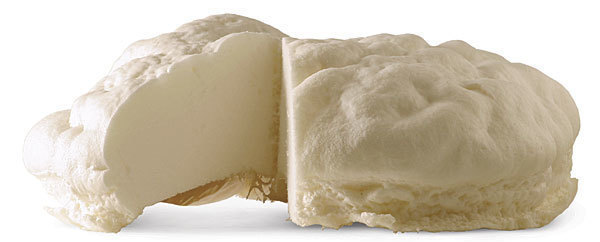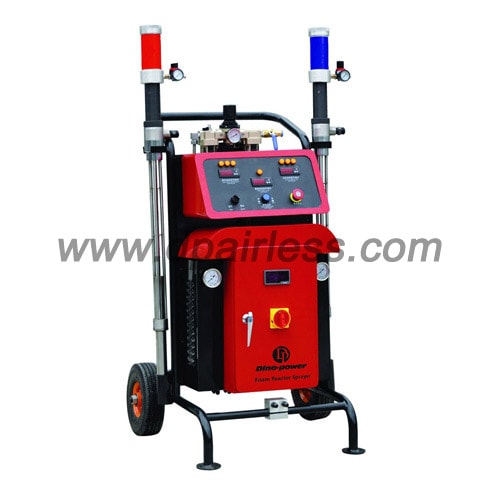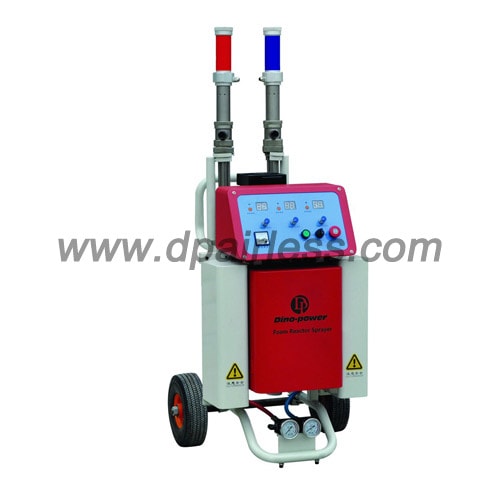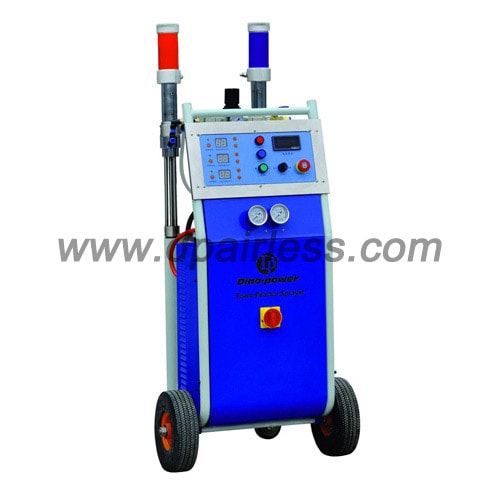1.How are polyurethane foams applied?
Polyurethane foam spray systems are two-component products that include an isocyanate and a resin by spraying applied. These are not pre-formed, friction-fit batts or boardstock insulations. It is not a wet application – no water is used. During application, there is a chain reaction between the two components that creates a bond to the substrate as it foams up. It dries, cures and hardens within 3-5 seconds. This product should always be installed by a trained applicator.
More about the Chemicals and How They React
Two liquids combine during a chemical reaction to form SPF. The two liquids are stored in 2 different drums or containers, and professionals generally refer to one container as the “A” side and the other container as the “B” side.
The “A” side of a spray polyurethane system is commonly comprised of methylene diphenyl diisocyanate (MDI) . The “B” side is typically a blend of polyols, catalysts, blowing agent, flame retardant and surfactant.The polyols are part of the chemical reaction to make foam. The remaining ingredients in the “B” side serve different purposes to help control the creation of the foam bubbles (the “cells”) in an optimal way, and to provide the various characteristics of the finished foam product (flame retardancy, for example). After the chemicals are mixed and reacted, the foam hardens very rapidly. The time to complete reaction depends on the type of SPF insulation and other variables.Safety Data Sheets (SDS) are available for both “A” and “B” side chemicals. As a SPF professional, it’s important that you understand the information on safety sheets and are able to share the details with your customers.
2.What are the differences between roofing foams, wall foams and sealant foams?
Polyurethane foams are either single- or plural-component products engineered on the molecular level for a specific purpose and application. Roofing foams are designed for heat insulation, and tend to offer higher compressive strengths and smoother surfaces, while wall foams are normally used for cooler or house, tend to offer faster reaction rates, higher yield and superior insulation R – values. Sealant foams can be similar in content to wall foams, and are either single-component or plural-component sealants in cans for smaller cracks and finer applications.
3.What are the differences between closed-cell and open-cell foams?
| Closed-Cell | Open-Cell |
| Higher R-value(greater than 6.0 per inch) | R-value(approximately 3.5 per inch) |
| High moisture barrier (lower moisture permeability) | Lower moisture barrier (higher moisture permeability) |
| Air barrier | Air barrier at full wall thickness |
| Higher strength and rigidity | Lower strength and rigidity |
| Resists water | Not suggested for applications in direct contact with water |
| Medium density (1.75 — 2.25 lbs./ft3) | Lower density (0.4 — 1.2 lbs./ft3) |
| Absorbs sound | Absorbs sound very well |
There are three major differences. First, DP uses the versatility of chemistry to offer a closed-cell content of greater than 90 percent for all of its formulations, and open-cell foams commonly used as insulation systems have approximately 60 percent open-cell content. Second, closed cell content offers an R-value of over 6.0 per inch and open cell offers between 3.0 and 3.9 per inch. Third, closed cell foam is virtually impermeable to air, while open cell foam allows far more air and vapor into the building interior.
4.Can an insulation system add structural strength?
Spray-applied closed-cell polyurethane foam is the only insulation material that adds structural integrity throughout the wall system. Testing conducted by the National Association of Home Builders (NAHB) Research Center shows spray-applied polyurethane foam insulation between wood- and steel-stud wall panels increased rack and shear strength two to three times compared with standard stick-built components with glass fiber insulation when sprayed onto gypsum wallboard and vinyl siding, and increased racking strength when sprayed onto oriented strandboard (OSB).
5.What about mold?
Mold requires three things to grow: moisture, warm temperatures and a food source. Polyurethane spray foam insulation has no nutritional value and is not considered a food source for mold. The use of polyurethane as insulation eliminates condensing surfaces and reduces the potential to accumulate moisture. It also eliminates air movement within the wall cavity. Other insulations are less successful at controlling air infiltration and providing adequate insulation to eliminate condensing surfaces, thus increasing the possibility of an environment susceptible to mold.
6.Are there any fire protection requirements?
Polyurethane insulation meets Class 1 flame and smoke characteristics. Once installed, it must be covered by a 15-minute thermal barrier or ignition barrier, depending on the application. Check with local Building Codes for final determination.
7.What equipment is required for SPF?
Spray-applied polyurethane foam systems require specific application equipment, including pumps, proportioners and spray guns. DP offers a selection of top-quality equipment for the proper application of insulation, from leading manufacturer DPAIRLESS. Equipment and materials are sold to qualified contractors; this is not a DIY project. For more information, please visit the website; https://www.dpairless.com/products/pu-polyurethane-foam-polyurea-sprayer-machine
8.Are there any special handling considerations?
Professionally trained contractors must always use personal protective equipment (PPE), avoid all contact with skin and eyes and do not inhale the vapors of the isocyanate.
While spraying, always work with adequate ventilation. Protective gloves, face mask and additional PPE items are required.
- Related products
- Related posts
- Comments
- FAQ
Leave your comments
FAQ regarding our business
Q1: What's your MOQ minimum order quantity for formal order?
A: Our MOQ is 10-100 units depends on the model. For small pump or spray guns , the MOQ is 100. and for large capacity pump, the MOQ could be 10. We can accept 1 or 2 units for sample testing order.
Q2: What's your payment terms?
A: We could accept L/C, T/T and Paypal or Western Union, also accept the payment against B/L copy . We can offer credit payment term for our long year cooperated representatives.
Q3: What is the lead time?
A: Sample order: 3-5days, mass production 20-40 days for the formal order.
Q4: Can we put our logo on your products? Is there extra charge for it?
A: Yes, we accept the OEM order based on the order quantity. The color box package need extra cost for less container order.
Q5: What's your warranty?
A: our warranty is 12months limited warranty except the easily worn parts. and for the motor we offer 2 years warranty.
Q6. Which port do you ship your machines?
A: We ship from Ningbo port China. for the FOB price, we will bear the local freight charge and the forwarder fee / customs fee, and all the shipping cost / insurance cost / forwarder cost at destination port / import duty tax ... all will be beared by the buyer (or importer).
Q7. how can i buy your products?
A: if you're final user, please leave your mobile phone number to us, and we will ask our distributor / dealer to call you directly. if you want to be our distributor or representative, welcome to contact us by email or whatsapp. we can talk more details one by one, we're sure you would be satisfied with our quality / service and price.












